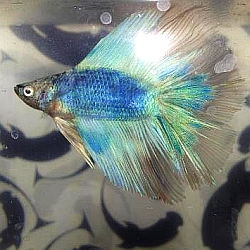
 Betta Fish Center > Purchasing Your Betta > Before You Bring Your New Betta Home - Read This
Betta Fish Center > Purchasing Your Betta > Before You Bring Your New Betta Home - Read This
There are specific steps to take when transporting your Betta from the pet store tank to your home aquarium. If you’ve purchased fish before, then you understand that it’s a process and the approach you take will determine the amount of stress you place on your new pet.
Before Taking the Trip to the Pet Store
Though the trip from the fish dealer to your home fish tank is exciting for you, it can take a toll on your Betta and even lead to disease. To ensure the least amount of trauma to everyone involved, it’s important to adhere to a few rules.
Make sure your Betta is properly packed for the trip. Place the fish in a “doubled” bag filled with as much water as the bag can hold. Just adding this extra water can help your Betta cope much easier with the trip.
Bring with you a dark shipping bag, which will also help calm your Betta. Most pet stores put fish in clear cellophane, but that’s not the best way to transport your fish. If you don’t have what is needed, put the clear cellophane into a paper bag which will be better than having nothing at all.
Keep your Betta warm on the trip. Many hobbyists accomplish this by placing the paper bag inside a small-insulated picnic cooler.
New Tank Syndrome
If you set up a new fish tank at the same time you purchase your new Betta, which occurs frequently, you might face “new tank syndrome”. This is when ammonia is produced in the tank faster than the bacteria can handle it, and it can cause unneeded stress on your fish.
If you notice your Betta’s body color is not as vibrant as before and he rests near the bottom of the tank or behind decorations, you may be dealing with “new tank syndrome.” Test the water for ammonia and nitrates immediately. If either value reads higher than optimum levels, change part of the water in your tank. Test once again. If the levels do not return to normal, you might have to continue this several times a day until you reach perfect levels. Soon your Betta will return to normal.
Quarantining New Betta Fish
Although quarantining a fish in its own container might not be the most enjoyable situation, it beats having a disease outbreak in your aquarium.
Adding a fish to the already established water environment can cause two things to happen:
Increased ammonia levels can greatly stress both the new fish and the older ones.
Without realizing it, the new addition can be diseased and create a sick situation in your aquarium.
The best solution is to set up a simple quarantine for the new arrival. Watch your Betta for several days. Once he’s adjusted and you’re sure he hasn’t been infected with any diseases, he’s ready to be added to his permanent home.
Into the Tank You Go!
Again, it’s vital that this is done in a gentle way to acclimate your new Betta to his new surroundings.
It’s likely that the temperature from either the quarantine tank or from the pet store container is different than your aquarium, so open the top of the plastic bag holding the new fish and float it at the top of the aquarium for at least thirty minutes.
When you’re about to add your new fish to the aquarium, just open the bag and tip it forward into the water, allowing him to swim out into the fish tank.









